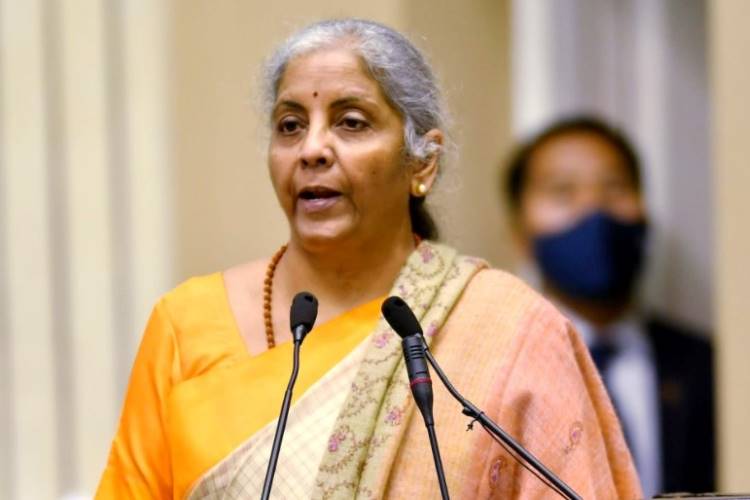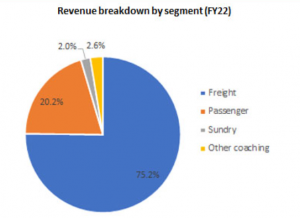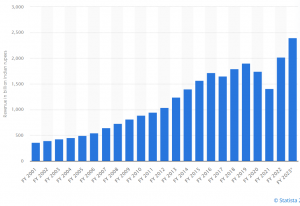
The Union Budget for 2023-24 will be presented by finance minister Nirmala Sitharaman on February 1. The Indian Railways has sought a gross budgetary support of about Rs 2 trillion in Budget 2023 as it looks to speed up capacity creation for both passenger and freight segments.
The focus of the railways this year would be development of infrastructure, semi high-speed trains, incomplete projects, hydrogen-powered trains, and the Ahmedabad-Mumbai bullet train. It is in sync with the Modi government’s focus on infrastructure development. The Railways will look to replace old coaches in express and mail trains with locally made Linke Hofmann Busch coaches.
READ | Skilling of women, quotas can boost female labour force participation
The last budget had allocated Rs 1.4 trillion to the railways, of which Rs 1.37 trillion was earmarked for capital expenditure. The railways now need a higher allocation to meet its funding requirements for a number of projects for network expansion, gauge conversion, electrification and signalling, apart from the upgradation of its rolling stock. The railway ministry has set an ambitious target of 100% electrification of its network by the end of 2023 and is laying at least 2,000 km of new tracks. It also needs the government’s funding support for more Vande Bharat trains.
Railways revenue breakdown by segment (FY 22)

The Mumbai-Ahmedabad bullet train is stuck with land acquisition issues. Only less than a quarter of the 508 km line has been completed at the end of 2022. The government may introduce more than 400 new rakes of Vande Bharat trains and 36 hydrogen-powered passenger trains. Budget 2023 may announce these decisions.
Indian Railways: Growth in revenues

Earlier, the government used to present a separate railway budget. The Narendra Modi government ended the 92-year-old practice of a separate railway budget, saying that it will be in the interest of the sector to end the colonial practice.
Progress in the Indian railways
The Ministry of Railways is implementing extensive reforms in the sector to upgrade and modernise the railway system. Earlier this year, the ministry of railways prepared a National Rail Plan 2030 to upgrade the railway system by 2030. Under the NRL, there is a provision of Vision 2024 to accelerate the implementation of certain critical projects.
The Indian Railways is witnessing new track progress of 12 km/day which earlier stood at 4 km/ day. The launch of Vande Bharat trains was a major step in enhancing the railway system. The first Vande Bharat Express was flagged off on February 15, 2019 on the New Delhi-Kanpur-Allahabad-Varanasi route. The Vande Bharat Express has a maximum speed of 160 kmph and has travel classes similar to the Shatabdi trains, but with better facilities.
Railways is central to India story
According to the last Economic Survey, India’s railways will be one of the most important contributors to the country’s growth. The 162-year-old Indian Railways operates more than 19,000 trains and has 7,112 stations. It is the world’s fourth-largest railway system behind the United States, China and Russia. The railway is crucial to India’s growth story as it enables geographic connectivity, citizen mobility, and commercial activity. It has a world-class logistics and transportation infrastructure. With a workforce of 13 lakh people, the Indian Railways is also the country’s largest employer.
The railways connect India’s economic life and speed up the development of industry and agriculture. Several businesses have benefited from railway support and expansion. The rise of the textile industry in Mumbai, jute industry in West Bengal, and coal industry in Jharkhand can all be attributed to the construction of a dense railway network. With the assistance of a cheaper form of logistics, farmers could sell their agricultural products to far-flung locations, as well as sell them for a profit in the global market.
Budget 2023 is likely to be the last full budget of the Modi government in its second term as the next Lok Sabha elections are due in April-May of 2024. The government is expected to present a populist Budget that will meet all its electoral compulsions.
